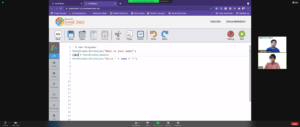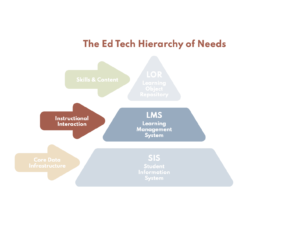Mobile University: Stanford’s Evolving iPhone and iPad Apps

“Mobile University: Stanford’s Evolving iPhone and iPad Apps” by Sherrie Negrea first appeared on Edcetera.
As the first university to develop an iPhone app, Stanford is a school that is never satisfied with the status quo. Not only has the university redesigned its mobile app several times since it was introduced in 2008, it has now expanded the platform with a new look for the iPad.
Over five years of mobile upgrades, the university has learned a few things about what works well. Stanford’s proximity to Silicon Valley is certainly one component. But more significantly, the designers of the apps have primarily been students.
Stanford University Registrar Thomas Black, whose team developed the initiative, hired the students who created the first version of iStanford. The students had launched their own company, Terriblyclever Design, and they went on to develop apps for universities across the country when their startup was bought out by Blackboard. “Those kids became an instant success and millionaires,” Black says.
The Four-Tile App
The university’s original iPhone app had four tiles: the course catalog, a student directory, maps and athletic information. In its next iteration, the number of tiles grew to 28 with functions that allowed students to access real-time information about the Stanford shuttle service, campus trivia, student demographics, and university events.
In yet another redesign of the mobile app that will be released next summer, Black says the number of functions will probably be cut back to 12 or 14 because of the amount of staff time needed to maintain those functions. “We found there’s a continual curation of information,” Black says. “While it was nice and jazzy at the time, some of it needs a lot of work to keep up.” Maintaining the tile for class analytics, for example, meant that a staff member had to update
Stanford’s statistical information, such as data on gender and ethnicity kept over a ten-year period. “I just realized I didn’t have the resources,” Black says.
New Look for the iPad
Stanford decided to create a new design for its iPad app, which was released last fall, so that students would have a different experience than with its iPhone app. “We were just trying to excite the students a little bit and developed some special functions for that purpose,” Black says.
Of the 12 tiles on the iPad app are several that are not available on the iPhone. One is an ePortfolio provided by Pathbrite, a San Francisco company, which allows students to share term papers or class projects with potential employers.
Another new function that will launch this summer is iStanford +,which will allow students to upload apps they’ve developed. Black is calling it an “app incubator” that will encourage students to create cutting-edge innovation.
“If you download university mobile apps, and I’ve downloaded hundreds of them, you’re going to find there’s a static set of functions they provide,” Black says. “We’re going to take a different path. We’ll have a set of standard apps, but we’re going to stand out from that core set of navigations with this ever-evolving and changing app environment that may turn you on to something that you’ve never experienced before.”







0 Comments
Leave a Comment
Your email address will not be published. All fields are required.